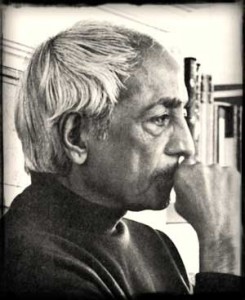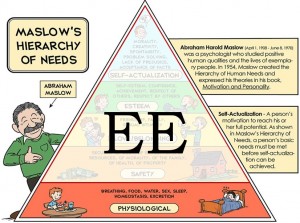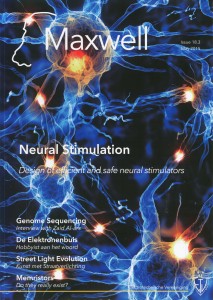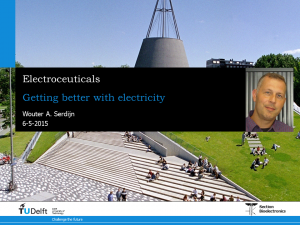“Learning in the true sense of the word is possible only in that state of attention, in which there is no outer or inner compulsion. Right thinking can come about only when the mind is not enslaved by tradition and memory.”
– Jiddu Krishnamurti
Considering all the senses we possess, the post could have been named “Do we see or look?” or perhaps “Do we speak or talk?”. But among the three, I would like to focus more on the capability to hear and listen, which also holds relevance to the research conducted at the bioelectronics group. To provide a sense of appreciation, simply look at how elegantly the brain processes the sounds we hear, with clear distinctions in frequency and amplitude making innumerable nervous connections, to generate a unique experience. For instance, when you hear the far away church bell ringing in a crowded marketplace, it fills you with joy and hope. If you care about the quality of the sound and prefer using high end headphones, you would know the joy of heavy bass sound and clear vocals that you savor while listening to music!
With tremendous advancements in microelectronics, thousands of individuals with varying degrees of disabilities are now able to hear better with the support of hearing aids, where the size of the aid is diminishing rapidly, while maximizing comfort. As an example, the cochlear implants (CI) are being used for the restoration of the hearing ability and is on the road to absolute bliss in audition. As exciting and extreme the research continues to be, I would like to draw your attention to the significance of listening, going beyond hearing, and the differences lying therein.
Although we have managed to bring about considerable improvement in the hearing abilities of the people through scientific progress, have the fully abled beings actually made complete use of the capabilities in a way that would enhance their personalities and their understanding? Do we truly listen?
Difference between hearing and listening
When we hear someone speak, we produce our own formulations and thoughts, we are either accepting or rejecting his/her idea, as the speaker speaks. We stand to compare his words with what we think based on the background, knowledge base and the experience we possess. This very fact is the denial of listening. While hearing is the ability to perceive sound by detection of the changes in pressure in the surrounding medium, which is involuntary, listening is an act you choose to do voluntarily, a decision you take consciously.
In Jiddu Krishnamurti’s words, in listening there is no comparison, neither is there acceptance nor rejection. The quality of listening is your attention. When you listen, every part of your body is in rapt attention to what is being spoken, intensely, where there is no judgement. There is no confusion but absolute clarity. You are neither influenced by the person’s appearance, nor intimidated by his presence. When you do that, you listen to the subject of discussion wholly. You are then in a position to discriminate right from wrong. There is a strong inner urge to understand the speech fundamentally, and not superficially be steered by the speaker and/or being ignorant. You are then very observant of the changes that are taking place within you, subtle nevertheless. A detailed discussion is available here for the interested reader.
Krishnamurti speaks in depth about the state of the mind while listening. A calm mind can perceive and listen with great clarity. Also, such a mind can have positive influence on the environment, the essence of which is well captured in one of Krishnamurti’s commentaries about “The noisy child and the silent mind” and is available here. As another example, in the movie Karate Kid (2010), Kung Fu master Mr. Han (Jackie Chan) takes Dre Parker (Jaden Smith) to the Dragon well on top of the mountain. Mr.Han explains the state of mind of the lady (who controlled the snake) which was calm and still just like the water in the well where Dre looks at his own reflection. The scene is available here (Watch from 1:13:00 to 1:17:10).
To give an analogy in the circuits and signal processing domain, when we need to acquire a signal, while ensuring quality and reproducibility in the digital domain for a given application, both internal and external noise have to either be minimized or rejected. In the same way, only a quiet mind can perceive and experience what is beyond hearing and also understanding. And often, the quality of listening goes with the choice of words one uses in his/her speech. As you begin to listen better, your thoughts become refined and so do your words. You then begin to filter all that is noise and only recover your signal of interest.
On another note, it is important to use one’s own discretion in placing the attention. Considering the information society we live in, there is a vast wealth of information on every subject. What we choose to learn is an individual choice. A wealth of information creates a dearth of attention, derived from the concept of attention economy, first studied extensively by Herbert Simon.
While we aim to bring about improvement in the the lives of people with hearing disabilities, we also need to give a thought towards how effectively we use our perfectly functioning abilities. How we take things for granted! If we didn’t, the experience would be more enriching, so much more happier and so much more wholesome!
As Helen Keller said,
“So much has been given to me I have not time to ponder over that which has been denied.”
This should not only motivate oneself to look within, reflecting on the challenges and converting every disadvantage to an advantage, but also placing a check on whether we use our inherent faculties to the total extent. It is just like owning a Lamborghini Aventador but being limited to use it as a Dacia Sandero on legal roads or employing an ARM micro-controller to make an LED blink!
***
About Jiddu Krishnamurti
 Born (11 May 1895 ) in Mandanpalle, Andhra Pradesh, India, Jiddu Krishnamurti, an Indian philosopher, is globally regarded as one of the greatest educators and thinkers. He had a deep sense of appreciation and respect for nature, as it appears in his notes. When he spoke, he did so with his own insight and vision, which had a certain directness and freshness.
Born (11 May 1895 ) in Mandanpalle, Andhra Pradesh, India, Jiddu Krishnamurti, an Indian philosopher, is globally regarded as one of the greatest educators and thinkers. He had a deep sense of appreciation and respect for nature, as it appears in his notes. When he spoke, he did so with his own insight and vision, which had a certain directness and freshness.
About Hellen Keller
 Born (27th June 1880) in Tuscumbia, Alabama, U.S., Hellen overcame the adversity of being deaf and blind to become one of the 20th century’s leading humanitarians as quoted here.
Born (27th June 1880) in Tuscumbia, Alabama, U.S., Hellen overcame the adversity of being deaf and blind to become one of the 20th century’s leading humanitarians as quoted here.
Suggested reading and references
- Commentaries on Living, Jiddu Krishnamurti
- Education and the significance of life, Jiddu Krishnamurti
- Story of my life, Hellen Keller

 On Oct. 6, 2015, I gave a guest lecture in the lecture series “Structured Electronic Design” (EE4C09) on Intuitive CMOS Transistor Modeling. In there I explain the 5 regions of operation of an MOS transistor (both in weak inversion and in strong inversion, both in triode and saturation, and off), based on the EKV model. For those of you that might still be struggling with understanding how the CMOS transistor works and how it can be employed in first time right, first time best analog and mixed signal circuit design, this lecture is for you.
On Oct. 6, 2015, I gave a guest lecture in the lecture series “Structured Electronic Design” (EE4C09) on Intuitive CMOS Transistor Modeling. In there I explain the 5 regions of operation of an MOS transistor (both in weak inversion and in strong inversion, both in triode and saturation, and off), based on the EKV model. For those of you that might still be struggling with understanding how the CMOS transistor works and how it can be employed in first time right, first time best analog and mixed signal circuit design, this lecture is for you.






![Damaged situation of the middle and inner ear; hair cells are damaged or non-existent, nerve cells are not fully developed or do not reach the cochlea [3].](http://bme.weblog.tudelft.nl/files/2015/03/damaged_inner_ear-300x244.jpg)

